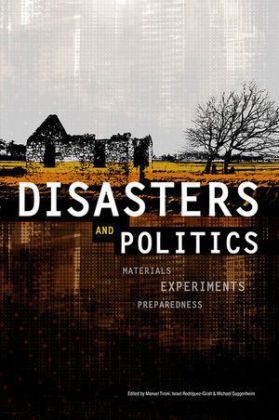Ulteriori informazioni
"The goal of this collection is to expand and rethink the connections between disasters and the political. Taking an innovative approach that encompasses empirical and theoretical studies, leading experts in the field explore how disasters configure the political in new ways, providing a lens for understanding what the political is and the pragmatics of politics. As events of radical disruption, disasters also enable the redefinition of the political itself, and associated notions such as controversy, crisis, and risk. The political nature of disasters is addressed from three different angles: how materials and non-human entities are engaged in disastrous politics, how disasters are measured, projected and anticipated, and how situations of radical disorganization are ordered and governed. Comparative, international case studies from the United Kingdom and the United States, along with Australia, Europe, and South America, combine science and technology studies, disaster studies, and political theory to provide an integrated account of the link between disasters and the political for researchers and academics. Together, they stimulate a more robust conversation between disciplines to feed into broader sociological debates"--
Sommario
Acknowledgements
Preface
Introduction: disasters as politics - politics as disasters (Michael Guggenheim)
Section 1: Materials: Ontologies
1. Geo-politics and the disaster of the Anthropocene (Nigel Clark)
2. Disasters as meshworks: Migratory birds and the enlivening of Doñana's toxic spill (Israel Rodríguez-Giralt, Francisco Tirado and Manuel Tironi)
3. Misrecognizing tsunamis: ontological politics and cosmopolitical challenges in early warning systems (Ignacio Farías)
Section 2: Experiments: Governance
4. Producing space, tracing authority: mapping the 2007 San Diego wildfires (Katrina Petersen)
5. Atmospheres of indagation: disasters and the politics of excessiveness (Manuel Tironi)
6. Technologies of recovery: plans, practices and entangled politics in disaster (Lucy Easthope and Maggie Mort)
Section 3: Preparedness: Anticipation
7. Creating a secure network: the 2001 anthrax attacks and the transformation of postal security (Ryan Ellis)
8. Concrete governmentality: shelters and the transformations of preparedness (Joe Deville, Michael Guggenheim and Zuzana Hrdlièková)
9. Anticipating oil: the temporal politics of a disaster yet to come (Gisa Weszkalnys)
10. Afterword: on the topologies and temporalities of disaster (Mike Michael)
Notes on contributors
Index

